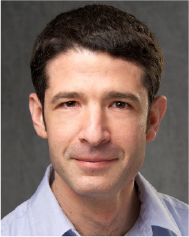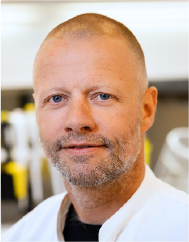Targets, T Cells, and Transplants: A Research Round-Up

Adding to the growing body of scientific knowledge about HIV and its potential vulnerabilities, amfAR-funded scientists regularly publish study results that are moving us closer to an HIV cure. Here are some recent highlights.
MAPPING A MOVING TARGET
HIV has been called a “moving target”—it mutates randomly and rapidly, thereby selecting for viruses able to escape pressure from a person’s immune system and from antiretroviral therapy. HIV also mutates more rapidly than most other viruses because the mechanisms by which it replicates are very error-prone, particularly with regard to formation of its outer envelope—the very site targeted by many experimental cure interventions, including neutralizing antibodies and CAR T cells.
But what if researchers could more accurately predict and anticipate these mutations with an eye to developing more targeted interventions?

Scientists at the University of Iowa, including grantee Dr. Hillel Haim, and Iowa State University used sophisticated mathematical modeling tools to interrogate the amino acid sequences of envelopes from 300 people living with HIV. For each person, the variability of these amino acids was mapped onto the three-dimensional structure of the HIV envelope. An algorithm was developed that predicted the variability of regions currently being targeted by multiple treatments, and did so with a greater fidelity than available modeling tools. The system may lead to individualizing antiviral therapeutics, not only for HIV but other infections as well.
COMBINING CAR T CELL STRATEGIES TO ACHIEVE AN HIV CURE
While CAR T cell therapy has become a critical part of the arsenal against many blood-associated cancers, efforts to apply it to control or eradicate HIV have been disappointing. However, advances in CAR design have renewed interest in this strategy as part of an HIV cure.

A key obstacle to effective anti-HIV CAR therapy is the limited persistence of such engineered cells in patients. Unlike the situation in blood cancers, in which a high tumor burden can activate and ensure persistence of CAR T cells, people living with HIV have low levels of HIV on their infected cell surfaces, and HIV reservoir cells have none.
amfAR grantee Dr. Martin Tolstrup and colleagues from Aarhus University, Denmark, reviewed methods used in their and other labs to enhance the expansion and persistence of anti-HIV CAR T cells. These processes include genetic modifica-tion of CAR and the use of different starting materials—e.g., naïve and stem cell memory T cells, rather than the unselected bulk populations of T cells typical of CAR cancer treatments.
Other promising adjuncts to CAR treatments include “lymphodepletion,” using standard anti-cancer medications; inducing latently infected cells to produce virus through the use of latency reversing agents; and HIV vaccination protocols. The authors conclude that anti-HIV CAR T cell trials will likely need to combine approaches to be successful.
IN TRANSPLANT-DRIVEN CURES, WHAT’S IN PLAY BEYOND THE CCR5 MUTATION?
Stem cell transplantation using donor cells with a CCR5 delta32 mutation is currently the only approach proven to eradicate the HIV reservoir and thereby effect a cure in people living with HIV. But the mutation is rare and this high-risk procedure is not scalable. As researchers study the individual mechanisms by which the transplant cure method works, one open issue is the extent to which CCR5-deficient donor stem cells are required to drive a transplant-related HIV cure, as opposed to so-called “allogeneic immunity” driven by the donor T cells regardless of their CCR5 status.

In a study led by amfAR grantee Dr. Jonah Sacha of Oregon Health & Science University, four monkeys were infected with SIV, the simian equivalent of HIV, treated with antiretroviral therapy (ART) until their virus was suppressed, and then underwent a stem cell transplant. Some 2–2.5 years later, ART was stopped and levels of active and latent virus in blood and tissues were examined. All four animals had a 1,000-fold reduction of the viral reservoir in blood, lymph nodes, and intestines. The one animal that achieved a complete reconstitution with donor cells has no detectable virus and appears to have been cured.
Concluding that allogeneic immunity can indeed eliminate HIV reservoirs, the researchers suggest that harnessing such immunity outside of transplantation may develop new approaches to HIV cure that can be more broadly effective.
RELATED CONTENT
Curing HIV—How Far Have We Come?
Read our summary of HIV cure strategies and the cases of cure, or treatment-free control, to date.
CAR Cells, Revved Up
amfAR grantee Dr. Scott Kitchen sought to enhance the effectiveness of CAR T cell at killing HIV-infected cells.
amfAR Grants Advance Gene Therapy Approaches to Curing HIV
Several recently funded cure approaches involve the use of CAR cells.